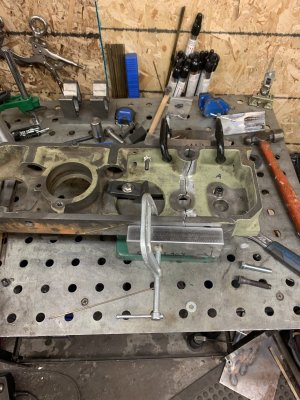a smile
Lifelong hobby - cold iron
Cleaning the pliers today found a broken block inside, I do not have brazing equipment, and also can not punch holes (located inside), how should I repair the use of the function?


Who can give me a better solution? I'm sure someone here has experience repairing cast iron!
Who can give me a better solution? I'm sure someone here has experience repairing cast iron!


